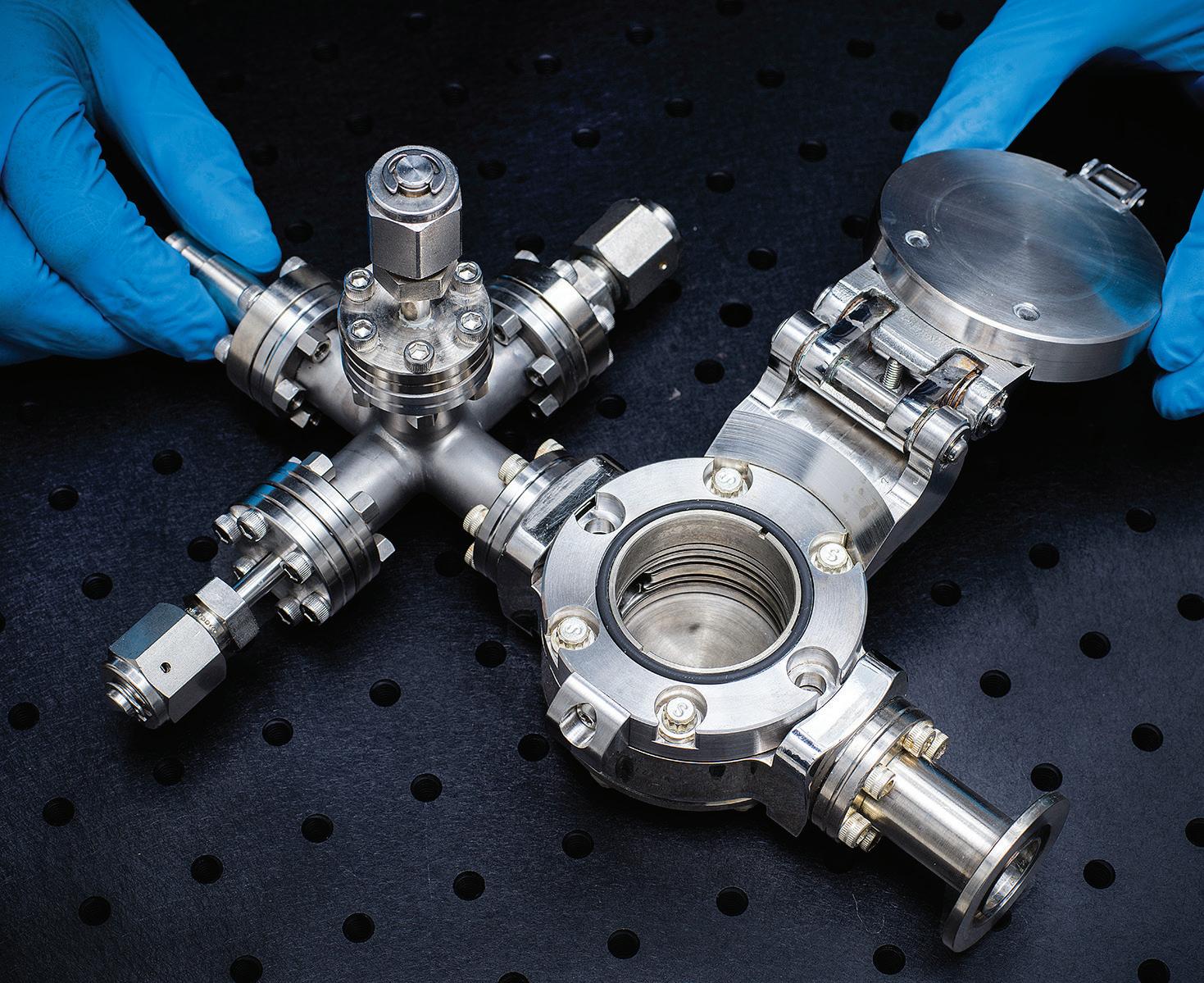
4 minute read
Atomic Layer Deposition – One Element at a Time
The shifting boundary between Earth’s outer magnetic field and the fluctuating solar wind generates a haze of soft X-rays, which can be a tantalizing target of observations or a source of frustrating noise, depending on what phenomena scientists want to observe.
Goddard engineer Dr. Vivek Dwivedi said the solution to both problems may be found in new coatings applied just atoms thick to an existing X-ray lens technology.
Advertisement
“Heliophysicists lack techniques to image the dynamic response of the Earth’s magnetosphere to varying solar wind conditions,” Dwivedi said, “while astrophysicists have frequently noted foreground emissions from the Sun or noise from its interaction with interstellar space interfering with observations of targets far beyond the solar system.”
His latest atomic-layer deposition (ALD) work involves bonding nickel and carbon onto glass substrates, improving their ability to properly reflect and focus lower energy or soft X-rays onto a receiver. As Dwivedi refines new techniques to improve ALD coatings, more applications for science come into focus.
Dwivedi uses commercially produced lobster-eye optics, which mimic the structure of the crustacean’s eyes. Composed of glass formed into long, narrow cells, they provide a wide-angle view, as each cell funnels a tiny amount of light from a slightly different angle toward a sensor. Lobster optics can focus difficult wavelengths like X-rays, which only reflect at very shallow angles.
Dwivedi said the nickel coating he perfected last year could greatly improve their performance for soft Xray observations needed for some investigations.
For heliophysicists like Goddard’s Dr. David Sibeck, observing the soft X-ray environment around our planet reveals how the solar wind affects Earth’s outer magnetosphere.
“The magnetosphere forms a kind of bubble or cocoon around us that extends tens of thousands of miles into space,” Sibeck said. “The boundary of that bubble is only a few hundred miles across, which on that scale is very sharp. It’s constantly being buffeted by solar wind, so it moves in and out. We would dearly love to be able to find and track this boundary at any given time to see how it’s being affected by our Sun.”
The only way scientists can measure that boundary now, Sibeck said, is to cross through it with instruments that measure the magnetic fields and charged particles present there. “This kind of wide-angle soft X-ray imager is a new concept,” he added, “and nickel has reflective properties we need to study the relevant wavelengths.”
For X-ray astronomers like Goddard astrophysicist Dr. Scott Porter, the interaction between Earth’s warm, enveloping atmosphere and the solar wind is a source of noise to be overcome.
Lobster-optics provide a tool for wide-angle scanning for X-ray sources across the cosmos, Porter said, and Vivek’s nickel-coated optics could collect 30% more X-rays than the state-of-the-art, goldplated iridium lenses.

Vivek Dwivedi displays his reaction chamber where nickel and carbon atoms are coaxed to layer onto glass.
Image Credit: Chris Gunn
His quarry is among the universe’s largest but shortlived eruptions, including the collisions of neutron stars and black holes.
“They’re very far away and not bright enough to see until they collide and emit gravitational waves and other high-energy light,” Porter said. “They are not predictable in terms of when or where to look.”
Working in tandem with gravitational wave explorers and satellites like NASA’s Fermi Gamma-ray Space Telescope, a wide-field, burst-detecting X-ray observatory could scan constantly for flashes. Other, observatories would then follow up with higher-resolution views of the event.
Soft X-rays could also reveal information about how the solar wind pushes out against the galactic environment of the Milky Way, how planets like Venus and Mercury lose atmosphere to the solar wind, and how that wind affects comets.
This year Dwivedi is working to develop an atomiclayer carbon deposition process to further augment the lobster optics. Dwivedi said the combination of nickel and carbon layers could have powerful applications for X-ray optics.
His ALD chamber recently flew on a parabolic flight to demonstrate the possibility of atomic-layer deposition in zero gravity, and Dwivedi plans to fly it again on a Blue Origin New Shepard rocket this summer.
“ALD in space opens new frontiers in the semiconductor industry where contamination control is paramount,” Dwivedi said. “Having a factory in space to manufacture ultraclean microprocessors could potentially open up a multibillion-dollar industry, and this ALD demonstration will lay the groundwork for that manufacturing ecosystem.”
Goddard’s ALD wizard said there may well be a use for many other elements on the periodic table once chemists master the techniques for controlled deposition.
“Whether for optics or dust-repellant coatings,” Dwivedi said, “we’re finding opportunities for all kinds of applications. For instance, gold may be a useful coating for probes exploring Venus as a shield against the acidic atmosphere because gold doesn’t corrode.”

